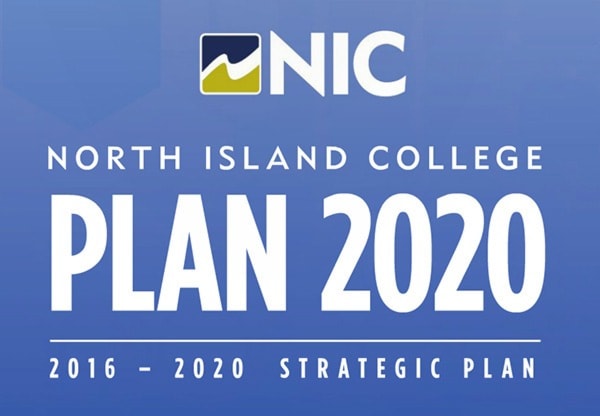It took a year of research, consultation and prioritizing, but the plan is set for the next five years of operations at North Island College (NIC).
And the future looks bright, according to President John Bowman.
“It’s my first plan – I’ve only been here since August of 2013,” Bowman says, “and I’m excited to share it with the public and show them all the great things going on here and how we plan to move forward into the future.”
While there’s “not a lot that is new,” in the plan, Bowman says, “there are things that have been elevated in prominence and some focuses have shifted somewhat.”
One of the increased focuses over the next five years is the diversification of the program offerings at NIC, and expansion of programs into more communities.
“Right now, most of our international programming is only offered in the Comox Valley, for example,” Bowman says, “so we’re hoping to expand some of that out into the Campbell River and Port Alberni campuses.”
Their priority has always been, and continues to be, improving student outcomes, Bowman says, and while that hasn’t changed, the ways to accomplish it has.
They took their cues on how to move forward from community stakeholders, students, teachers, union representatives, and various other advisory groups.
“It was a very inclusive process,” Bowman says. “I spent this past spring travelling around the whole region going to town hall meetings, municipal council meetings and talking to people, and what I kept hearing was that people recognize the importance of the college to the region and that they want it to continue to improve and serve in the best interest of the communities, and that’s reflected in this plan.”
The one less positive aspect of the plan is the section on “Revenue, Expenditures and Funding.”
Part of the strategic planning involved establishing NIC’s, “funding and fiscal capacity challenges,” which came packaged in a fairly disheartening chart.
The graphic shows that NIC’s base operating grant from the Ministry of Advanced Education – which makes up 78 per cent of the school’s revenue – was $78 below the per capita average of $217 for rural colleges in 2013/14, which the school says represents a $12.4 million annual difference between them and other similar schools.
“Unfortunately, there isn’t a formula system for funding post secondary institutions,” Bowman says, and that creates a situation where not all institutions are on equal footing.
One of the fallouts from that lack of funding can actually be seen as an opportunity, however, as it has forced the school to become more “entrepreneurial,” in order to meet its funding requirements, giving it opportunities to engage their communities in different and more interesting ways.
It also brings the college closer to the community itself. Because the college is more dependent on community support than other schools of its size, it is naturally more in tune with the community’s needs and willing to make adjustments to suit those needs,
which it does.
One of those adjustments, Bowman says, is the upcoming announcement surrounding the Campbell River campus’ renovation project, which he says will create a better learning environment and promote student success here in our community.
“The overarching message is that the future of NIC is bright,” Bowman says, “and we look forward to continuing forward into the future in cooperation with our community stakeholders and partners and continuing to improve.”
The full five-year plan can be found at nic.bc.ca/NICPlan2020
